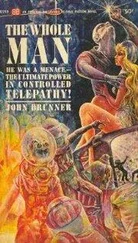John Bourke - The Medicine-Men of the Apache. (1892 N 09 / 1887-1888 (pages 443-604))
Здесь есть возможность читать онлайн «John Bourke - The Medicine-Men of the Apache. (1892 N 09 / 1887-1888 (pages 443-604))» — ознакомительный отрывок электронной книги совершенно бесплатно, а после прочтения отрывка купить полную версию. В некоторых случаях можно слушать аудио, скачать через торрент в формате fb2 и присутствует краткое содержание. Жанр: foreign_antique, foreign_prose, на английском языке. Описание произведения, (предисловие) а так же отзывы посетителей доступны на портале библиотеки ЛибКат.
- Название:The Medicine-Men of the Apache. (1892 N 09 / 1887-1888 (pages 443-604))
- Автор:
- Жанр:
- Год:неизвестен
- ISBN:нет данных
- Рейтинг книги:4 / 5. Голосов: 1
-
Избранное:Добавить в избранное
- Отзывы:
-
Ваша оценка:
- 80
- 1
- 2
- 3
- 4
- 5
The Medicine-Men of the Apache. (1892 N 09 / 1887-1888 (pages 443-604)): краткое содержание, описание и аннотация
Предлагаем к чтению аннотацию, описание, краткое содержание или предисловие (зависит от того, что написал сам автор книги «The Medicine-Men of the Apache. (1892 N 09 / 1887-1888 (pages 443-604))»). Если вы не нашли необходимую информацию о книге — напишите в комментариях, мы постараемся отыскать её.
The Medicine-Men of the Apache. (1892 N 09 / 1887-1888 (pages 443-604)) — читать онлайн ознакомительный отрывок
Ниже представлен текст книги, разбитый по страницам. Система сохранения места последней прочитанной страницы, позволяет с удобством читать онлайн бесплатно книгу «The Medicine-Men of the Apache. (1892 N 09 / 1887-1888 (pages 443-604))», без необходимости каждый раз заново искать на чём Вы остановились. Поставьте закладку, и сможете в любой момент перейти на страницу, на которой закончили чтение.
Интервал:
Закладка:
The Indians of Topia (in the Sierra Madre, near Sinaloa), were in the habit of scarifying their tired legs and aching temples. 95 95 Alegre, Historia de la Compañía de Jesus en Nueva-España, vol. 1, p. 401.
The Arawaks, of Guiana, also scarified, according to Spencer. 96 96 Desc. Sociology.
The inhabitants of Kamchatka use enemata much in the same way as the Navajo and Apache do. 97 97 Kraskenninikoff, History of Kamtchatka and the Kurilski Islands, Grieve's translation, p. 219.
They also use moxa made of a fungus. 98 98 Ibid., p. 220.
It has never been my good fortune to notice an example of trephining among our savage tribes, although I have seen a good many wounded, some of them in the head. Trephining has been practiced by the aborigines of America, and the whole subject as noted among the primitive peoples of all parts of the globe has been treated in a monograph by Dr. Robert Fletcher, U. S. Army. 99 99 Contributions to North American Ethnology, vol. 5.
Dr. Fordyce Grinnell, who was for some years attached to the Wichita Agency as resident physician, has published the results of his observations in a monograph, entitled "The healing art as practiced by the Indians of the Plains," in which he says: "Wet cupping is resorted to quite frequently. The surface is scarified by a sharp stone or knife, and a buffalo horn is used as the cupping glass. Cauterizing with red-hot irons is not infrequently employed." A cautery of "burning pith" was used by the Araucanians. 100 100 Smith, Araucanians, p. 233.
"It may be safely affirmed that a majority of the nation [Choctaw] prefer to receive the attentions of a white physician when one can be obtained. * * * When the doctor is called to his patient he commences operations by excluding all white men and all who disbelieve in the efficacy of his incantations." 101 101 Dr. Edwin G. Meek, Toner Collection, Library of Congress.
"The [Apache] scouts seem to prefer their own medicine-men when seriously ill, and believe the weird singing and praying around the couch is more effective than the medicine dealt out by our camp 'sawbones.'" 102 102 Lieut. Pettit in Jour. U. S. Mil. Serv. Instit., 1886, pp. 336-337.
The promptness with which the American Indian recovers from severe wounds has been commented upon by many authorities. From my personal observation I could, were it necessary, adduce many examples. The natives of Australia seem to be endowed with the same recuperative powers. 103 103 Smyth, Aborigines of Victoria, vol. 1, p. 155.
After all other means have failed the medicine-men of the Southwest devote themselves to making altars in the sand and clay near the couch of the dying, because, as Antonio Besias explained, this act was all the same as extreme unction. They portray the figures of various animals, and then take a pinch of the dust or ashes from each one and rub upon the person of the sick man as well as upon themselves. Similar altars or tracings were made by the medicine-men of Guatemala when they were casting the horoscope of a child and seeking to determine what was to be its medicine in life. This matter of sand altars has been fully treated by Matthews in the report of the Bureau of Ethnology for 1883-'84, and there are several representations to be found in my Snake Dance of the Moquis. "Writing on sand" is a mode of divination among the Chinese. 104 104 Dennys, Folk Lore of China, p. 57.
Padre Boscana represents the "puplem" or medicine-men of the Indians of California as making or sketching "a most uncouth and ridiculous figure of an animal on the ground," and presumably of sands, clays, and other such materials. 105 105 "Chinigchinich" in Robinson's California, pp. 271, 272.
HAIR AND WIGS
The medicine-men of the Apache were, at least while young, extremely careful of their hair, and I have often seen those who were very properly proud of their long and glossy chevelure. Particularly do I recall to mind the "doctor" at San Carlos in 1885, who would never allow his flowing black tresses to be touched. But they do not roach their hair, as I have seen the Pawnee do; they do not add false hair to their own, as I have seen among the Crow of Montana and the Mohave of the Rio Colorado; they do not apply plasters of mud as do their neighbors the Yuma, Cocopa, Mohave and Pima, and in such a manner as to convince spectators that the intent was ceremonial; and they do not use wigs in their dances. Wigs made of black wool may still be found occasionally among the Pueblos, but the Apache do not use them, and there is no reference to such a thing in their myths.
It is to be understood that these paragraphs are not treating upon the superstitions concerning the human hair, as such, but simply of the employment of wigs, which would seem in former days among some of the tribes of the Southwest to have been made of human hair presented by patients who had recovered from sickness or by mourners whose relatives had died. 106 106 The reader interested in this matter may find something bearing upon it in Diego Duran, lib. 1, cap. 36, p. 387; Torquemada, Mon. Indiana, lib. 9, cap. 3; Venegas, History of California, vol. 1, p. 105; Gomara, Conq. de Mexico, p. 443; Herrera, dec. 4, lib. 8, p. 158; Maximilian of Wied, p. 431, and others; The "pelucas" mentioned of the Orinoco tribes by Padre Gumilla would seem to be nothing more than feather head-dresses; p. 66.
Wigs with masks attached were worn by the Costa Ricans, according to Gabb. 107 107 Tribes and Languages of Costa Rica, Proc. Am. Philos. Soc., Philadelphia, 1875, p. 503.
Some of the Apache-Yuma men wear long rolls of matted hair behind, which are the thickness of a finger, and two feet or more in length, and composed of old hair mixed with that growing on the head, or are in the form of a wig, made of hair that has been cut off when mourning the dead, to be worn on occasions of ceremony. 108 108 Corbusier, in American Antiquarian, Sept., 1886, p. 279.
Observations of the same kind have been made by Speke upon the customs of the people of Africa in his Nile, 109 109 Source of the Nile, p. 567.
concerning the Kidi people at the head of the Nile; by Cook, in Hawkesworth's Voyages, 110 110 Vol. 2, p. 193.
speaking of Tahiti, and by Barcia, 111 111 Ensayo Cronologico, p. 139.
speaking of Greenland. Sir Samuel Baker describes the peculiar wigs worn by the tribes on Lake Albert Nyanza, formed of the owner's hair and contributions from all sources plastered with clay into a stiff mass. 112 112 For the Shamans of Kodiak, see Lisiansky, Voyage, London, 1814, p. 208; for the Mexicans, Padre José Acosta, Paris, 1600, cap. 26, p. 256; Society Islands, Malte-Brun, Univ. Geography, vol. 3, lib. 58, p. 634, Boston, 1825. Sir Samuel Baker, The Albert N'yanza, vol. 1, p. 211.
Melchior Diaz reported that the people of Cibola "élèvent dans leurs maisons des animaux velus, grands comme des chiens d'Espagne. Ils les tondent, ils en font des perruques de couleurs." This report was sent by the Viceroy Mendoza to the Emperor Charles V. Exactly what these domesticated animals were, it would be hard to say; they may possibly have been Rocky Mountain sheep, 113 113 Ternaux-Compans, vol. 9, p. 294.
though Mr. Cushing, who has studied the question somewhat extensively, is of the opinion that they may have been a variety of the llama.
The Assinaboine used to wear false hair, and also had the custom of dividing their hair into "joints" of an inch or more, marked by a sort of paste of red earth and glue; 114 114 Catlin, North American Indians, London. 1845, vol. 1, p. 55.
The Mandan did the same. 115 115 Ibid., p. 95.
In this they both resemble the Mohave of the Rio Colorado. "The Algonquins believed also in a malignant Maniton. * * * She wore a robe made of the hair of her victims, for she was the cause of death." 116 116 Parkman, Jesuits in North America, p. lxxxiv.
Интервал:
Закладка:
Похожие книги на «The Medicine-Men of the Apache. (1892 N 09 / 1887-1888 (pages 443-604))»
Представляем Вашему вниманию похожие книги на «The Medicine-Men of the Apache. (1892 N 09 / 1887-1888 (pages 443-604))» списком для выбора. Мы отобрали схожую по названию и смыслу литературу в надежде предоставить читателям больше вариантов отыскать новые, интересные, ещё непрочитанные произведения.
Обсуждение, отзывы о книге «The Medicine-Men of the Apache. (1892 N 09 / 1887-1888 (pages 443-604))» и просто собственные мнения читателей. Оставьте ваши комментарии, напишите, что Вы думаете о произведении, его смысле или главных героях. Укажите что конкретно понравилось, а что нет, и почему Вы так считаете.












